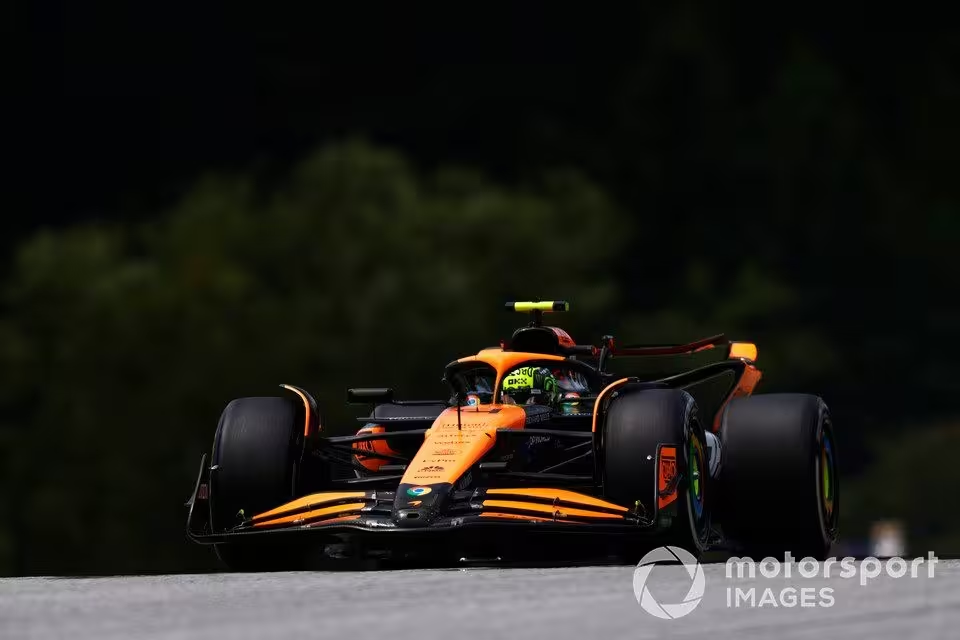McLaren is one of the few teams to bring upgrades to Formula 1’s Austrian Grand Prix, after revealing a new front wing and suspension fairings.
The primary function of these modifications revolves around McLaren looking to improve what it considers to be an imbalance in the performance of its MCL38 in both low and high-speed corners.
Speaking about the aim of the improvements, team boss Andrea Stella said: “The focus is to keep the development direction that we introduced to the trackside with the front wing we took to Miami.
“We saw that that concept worked well, so we wanted to pursue this direction further. And this is another attempt to improve, I would say, in particular, the low-speed behaviour of the car.”
The changes to the wing include some subtle geometrical adjustments made to the flaps across their span, in order to better present the airflow to those suspension elements downstream.
However, the bulk of the changes have been made to the outboard portion of the wing and the endplate, as the team looks to alter the wing’s outwash characteristics.
The shape of the leading and trailing edges of the endplate have been altered quite significantly, with a gentler curvature preferred over the sharp-edged variant of their former design (green dotted line).
There are also some adjustments made to the endplate’s camber, not only to suit the other new design characteristics that have been altered but also in order to leverage the diveplane’s attributes.
The flap tips, which were already of the semi-detached variety, have also been optimised, as they’re now more flared to aid in generating outwash, whilst the rearmost element has been extended and falls in line with the modified trailing edge of the endplate (red arrow).
Lando Norris, McLaren MCL38
Photo by: Zak Mauger / Motorsport Images
The battle to find a car that performs well at both low and high speed is not something unique to McLaren though, with Stella saying it is a limitation that has been imposed by the current regulations.
“Especially with this generation of car, and this generation of front wing regulations, the geometries are very restricted,” he said.
“It’s very difficult to achieve what you want at low speed, what you want in a straight line or what you want at high speed.
“This is a challenge that I’m sure all teams are facing, and that’s also why it’s also quite difficult to bring development on a front wing.
“Hopefully the compromise we’re…
Click Here to Read the Full Original Article at Motorsport.com – Formula 1 – Stories…

